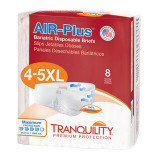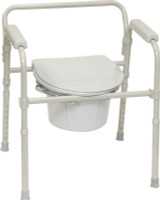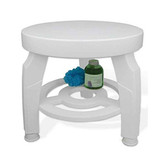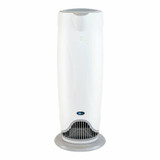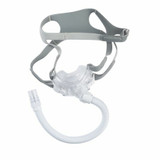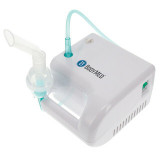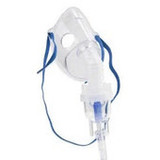
The Caregiver Guide - Dealing with Parkinson's Disease
Parkinson's disease is a neurodegenerative disorder that affects millions of people worldwide. It manifests with the progressive loss of dopamine-producing cells in the brain, leading to symptoms such as tremors, stiffness, and difficulty with movement and coordination. While Parkinson's most profoundly affects those individuals diagnosed with the disease, it also has a significant impact on their caregivers.
Parkinson's adds an extra layer of complexity to an already demanding role. Caregivers play a crucial role in providing physical, emotional, and practical support to the patients they care for. They frequently face unique challenges related to understanding the disease, managing medications and treatments, and helping their loved ones maintain quality of life.
Key Symptoms and Challenges of Parkinson's Disease
Motor symptoms are usually the most recognizable signs of Parkinson's disease. These include tremors, stiffness or rigidity in the muscles, bradykinesia (slowness of movement), and postural instability. These symptoms can make everyday tasks such as walking, writing, or even speaking more difficult for individuals with Parkinson's.
Parkinson's disease also presents various non-motor symptoms that can significantly affect a person's well-being. These may include cognitive changes such as memory loss or difficulty concentrating, mood disorders like depression or anxiety, sleep disturbances including insomnia or excessive daytime sleepiness, and autonomic dysfunction leading to issues like constipation or urinary problems.
The physical limitations caused by motor symptoms can result in decreased mobility and independence. Routine daily activities like getting dressed or preparing meals often become gradually more challenging or even impossible. Non-motor symptoms such as cognitive changes can also impact an individual's ability to work or engage in social interactions.
Managing medications and treatment plans eventually becomes quite complex due to the progressive nature of the disease and the potential side effects of medication. The need for regular medical appointments and adjustments in treatment presents a significant challenge for individuals with Parkinson's as well as those who care for them.
Creating a Safe and Supportive Home Environment
As with many other age-related conditions, Parkinson's disease hampers one’s ability to perform routine tasks or to move about safely and confidently. The typical motor symptoms lead to a degree of mobility impairment, while cognitive decline may affect a person’s judgment and lead to a higher risk of accidents or injuries at home.
The first and most significant step towards mitigating the risk of falls and accidents is creating a safe home environment. Making some modifications can improve access and mobility in and around the home. Such modifications may include installing handrails or grab bars in high-risk areas such as bathrooms and staircases to provide stability and prevent falls. Removing tripping hazards, ensuring adequate lighting, and rearranging furniture to create clear pathways will also enhance safety.
You may also want to consider harnessing modern medical technology in the field of mobility aids. From simple, inexpensive canes to walkers to wheelchairs and mobility scooters, there is a device for everyone and every level of mobility impairment. For advice on mobility aids, speak to the team at LL Medico. We have over 25 years of experience in all aspects of senior care products, and we stock a comprehensive range of mobility devices, adult diapers, incontinence products and more. Call (855) 422-4556 or email [email protected] today.
A regular exercise routine will help to maintain strength and balance, which, in turn, enable one to move around with better control and confidence. When creating an exercise plan, be mindful of fatigue that may occur due to physical limitations and medication side effects.
Developing a Daily Routine and Managing Medications Effectively
According to this Parkinson’s Foundation article, “Some people with Parkinson's disease (PD) experience mild cognitive impairment. Feelings of distraction or disorganization can accompany cognitive impairment, along with finding it difficult to plan and accomplish tasks”.
A set daily routine can help to avoid the frustration or anger that can develop from feeling confused or unable to function independently. A consistent daily routine, including fixed times for getting up or going to bed, taking meals, or doing exercises, can make it easier for a patient with Parkinson’s to remember and maintain some degree of independence.
Adhering to medication schedules is also a key aspect of managing Parkinson’s. Taking medications consistently at prescribed times and intervals helps maintain optimal symptom control throughout the day. Set reminders using alarm clocks or smartphone apps or use pill organizers to ensure that your patient takes medication on time and to prevent missed doses or accidental double-dosing.
Emotional Support and Coping Strategies
Caring for a loved one can be emotionally challenging and physically demanding. Both the caregiver and the patient may experience a range of emotions, from stress and frustration to sadness and guilt. As much as caregivers strive to provide physical and emotional support to their patients, they should also prioritize their own health and well-being.
With the exponential growth in the number of family caregivers, caregiver support networks and resources have also increased rapidly. Caregiver support groups or professional counseling provide an outlet for caregivers to express their feelings, share experiences, and receive guidance from others who are going through similar situations.
Caregivers can benefit from implementing coping strategies to help them manage stress, reduce burnout, and maintain a positive mindset. Common coping strategies include practicing self-care activities such as exercise, meditation, or engaging in hobbies that bring joy. Caregivers should also take a break from time to time to rest and recharge.
It is also important to provide emotional support and coping strategies for the patient. Apart from support and social groups at community level, the Parkinson’s Foundation is a great place to find guidance and support specifically for people with Parkinson’s. In their own words, “The Parkinson’s Foundation makes life better for people with Parkinson's disease (PD) by improving care and advancing research toward a cure. In everything we do, we build on the energy, experience and passion of our global Parkinson’s community”. The foundation is represented and easily accessible all over the US.
In addition, encouraging open communication between caregiver and patient builds trust and rapport and allows the patient to express their emotions and concerns freely. Providing patients with relaxation techniques or engaging them in activities they enjoy can also help alleviate anxiety or depression.
Conclusion
Parkinson’s disease is a debilitating condition that presents enormous challenges for those who suffer from it and those who care for them. This is not a burden to be taken lightly or carried alone. There are a multitude of support groups and resources available that have honed their skills and expertise in the challenges of Parkinson’s Disease. Many of these resources are free, so there is minimal deterrent to using them.
"Courage doesn't always roar. Sometimes courage is the quiet voice at the end of the day saying, 'I will try again tomorrow.'" These inspirational words by acclaimed author and artist Mary Anne Radmacher highlight the quiet resilience and perseverance that come with the daily acts of courage and ongoing challenges of caring for a Parkinson’s patient. Hang in there – you’re a hero, even if you don’t always feel like one.












